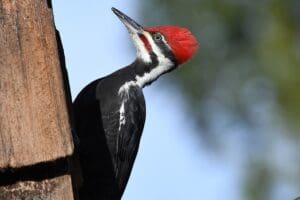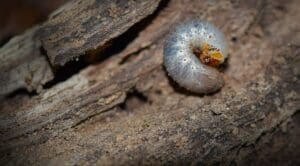
When it comes to your lawn, you know that there are a lot of insects that can cause damage to your lawn. But there are also a lot of insects that help your lawn too. There are three different types of beneficial lawn insects, and we’re going to look at them below.
Beneficial Lawn Insects Type 1 – Predators
There are some beneficial lawn insects that are predators. These are relatively mobile bugs that will look for prey. Some of them, such as the assassin have a sucking mouthpart that will penetrate the victim’s soft body, then suck out its internal fluids. Then they suck out their victim’s internal fluids, and this leaves behind its outer shell. Other kinds of predatory insects have mouthparts that chew, and they eat the whole victim’s body.
Some of the ones that you probably know about are:
- Ladybugs – There are a few hundred ladybug species of these bugs. Both the larval and battle stages will voraciously feed on soft-bodied insects like aphids and thrips. The adults are normally oval-shaped, small, and come in bright colors with spots on their wing covers. Ladybug larvae are usually dark and have bright spots. They also can look quite intimidating.
- Ground Beetles – Ground beetles are very common predators in the Massachusetts lawn. The species that are most common are a bit smaller when compared with Japanese beetles. They’re usually a shiny green, bronze, or tan color. Both stages of development will feed on some type of caterpillars and soft-bodied insects. They usually move very fast and they look for and destroy prey.
- Rove Beetles: This is a type of insect that many people might not know about. However, they are commonly found in areas of turfgrass. They’re a bit longer than other kinds of beetles and their hindwings aren’t fully expanded. Like the other kinds, they will feed on a few different soft-bodied insects.
- Spiders: Although they aren’t true insects, spiders are great to have in your lawn or garden. They feed on a lot of mites and immature insects.
- Ants: There are ant species that are carnivorous. They look out for soft-bodied organisms such as insects to give provisions to the nest. Not only that, but ant activity can often help in breaking down organic material as well as forming soil. But if there is too much ant activity, they can quickly become a huge nuisance, particularly if there is damage to the turf.
Beneficial Lawn Insects Type 2 – Parasitoids
The second group of insects that are beneficial is parasitoids. They’re small and they develop on a host’s body or inside of it. Adult females find suitable hosts and then lay their eggs, either by inserting them through the host’s skin and going into its internal tissue or on the host’s outside. The offspring then feed on their host’s fluids and organs, gradually weakening and killing the host.
There are quite a few parasitic wasps found in Massachusetts and they’re active in the lawn. These kinds of wasps are adapted to laying their eggs in a variety of soft-bodied insects. They don’t sting or bite people. A few of the ones that are most common are:
- Ichneumon Wasps: Around 1/2” long, these wasps are often brown or reddish. Their tail end has an appendage that is long and string-like. It’s used for inserting her eggs into her victim. As adults, they feed on pollen and nectar, while the babies feed inside different sawflies and caterpillars.
- Braconid Wasps: A bit smaller than the ichneumon wasps, these wasps don’t usually get longer than ½ an inch. Their larva feed on the beetle larva, aphids, and caterpillars.
- Chalcid Wasps: The smallest of the three types, they range anywhere from 1/5” to 1/8” in length. The adults eat nectar and pollen and the babies feed on soft-bodied insects such as aphids as well as mites.
Beneficial Lawn Insects Type 3 – Saprophytes
The third group of insects that are beneficial for lawns is saprophytes. They feed on decaying or dead organic matter, helping to break down the plant tissue as part of a natural cycle. This similarly happens in the forests. If you go into a forest and you turn over a log or rock, chances are that you are going to see a lot of insects. A lot of these types of creatures are the saprophytes, and they feed on decaying wood or leaves. A common example is the springtails. They are very tiny, and their underside has a structure that can release similar to a speed. This will flip it up and away from the foraging insects. They will often occur in huge numbers, with a 4” diameter core having 20-30.
These are the three types of beneficial lawn insects that you want to have on and around your lawn. If you want to have a beautiful lawn and you are looking for a lawn care company, contact us for a quote. You can also contact us on Facebook.



